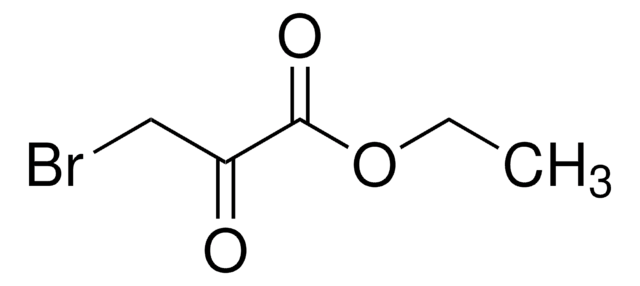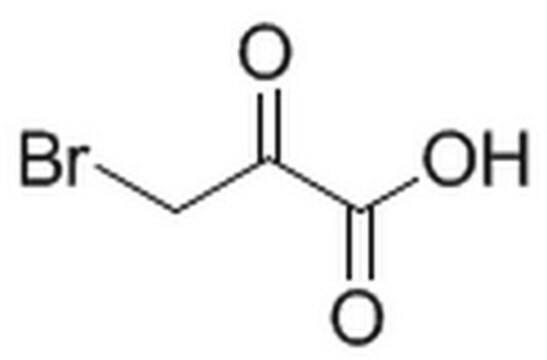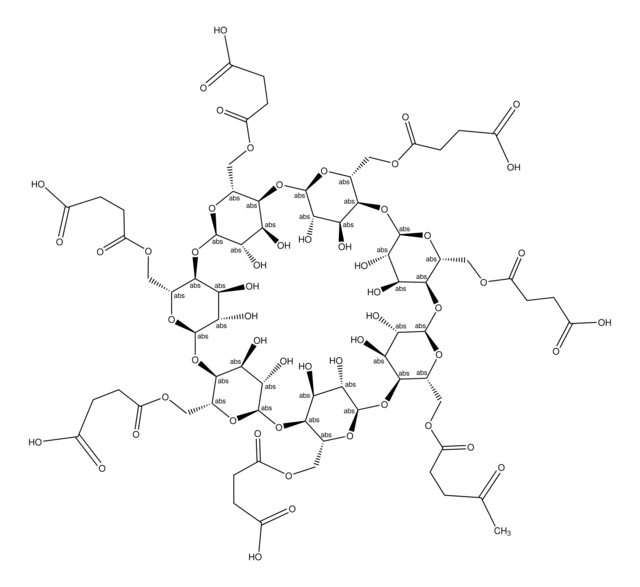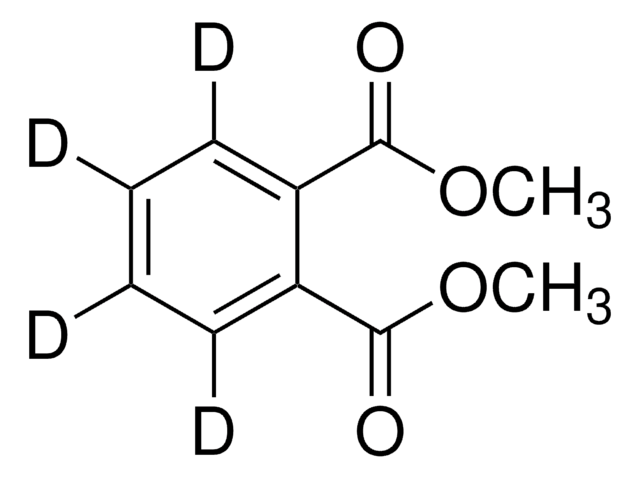16490
Bromopyruvic acid
≥98.0%
Synonyme(s) :
3-Bromo-2-oxopropionic acid
About This Item
Produits recommandés
Niveau de qualité
Essai
≥98.0%
Forme
(Powder or Crystals or Flakes)
Pf
77-82 °C
Solubilité
water: soluble 1 g/10 mL, clear to very slightly hazy, colorless
Groupe fonctionnel
bromo
carboxylic acid
ketone
Température de stockage
2-8°C
Chaîne SMILES
OC(=O)C(=O)CBr
InChI
1S/C3H3BrO3/c4-1-2(5)3(6)7/h1H2,(H,6,7)
Clé InChI
PRRZDZJYSJLDBS-UHFFFAOYSA-N
Vous recherchez des produits similaires ? Visite Guide de comparaison des produits
Description générale
Application
Autres remarques
Mention d'avertissement
Danger
Mentions de danger
Classification des risques
Eye Dam. 1 - Skin Corr. 1B
Code de la classe de stockage
8A - Combustible corrosive hazardous materials
Classe de danger pour l'eau (WGK)
WGK 3
Point d'éclair (°F)
Not applicable
Point d'éclair (°C)
Not applicable
Équipement de protection individuelle
Eyeshields, Faceshields, Gloves, type P3 (EN 143) respirator cartridges
Faites votre choix parmi les versions les plus récentes :
Déjà en possession de ce produit ?
Retrouvez la documentation relative aux produits que vous avez récemment achetés dans la Bibliothèque de documents.
Les clients ont également consulté
Articles
We presents an article about the Warburg effect, and how it is the enhanced conversion of glucose to lactate observed in tumor cells, even in the presence of normal levels of oxygen. Otto Heinrich Warburg demonstrated in 1924 that cancer cells show an increased dependence on glycolysis to meet their energy needs, regardless of whether they were well-oxygenated or not.
Notre équipe de scientifiques dispose d'une expérience dans tous les secteurs de la recherche, notamment en sciences de la vie, science des matériaux, synthèse chimique, chromatographie, analyse et dans de nombreux autres domaines..
Contacter notre Service technique












